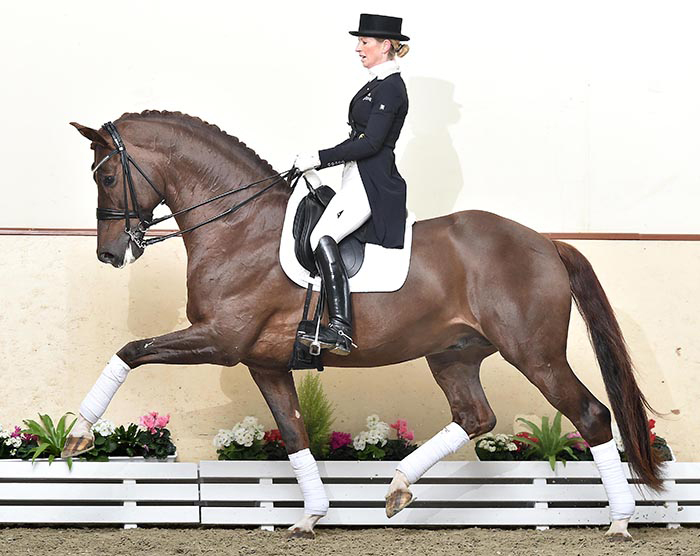
Vitalis is one of the most influential dressage stallions in the world today, yet, like some of the greatest stallions of all time, he was rejected at the Stallion Licensing. Eugène Reesink recalls what happened when he put Vitalis up for approval:
“He was approved in Westfalia, he was a reserve champion. When he was two-and-a-half, I called the Dutch studbook, and they said we don’t want to see him, we have so many good Vivaldi stallions and Vitalis is just not good enough. As a four-year-old, I re-presented him under saddle in The Netherlands and they kicked him out. It’s a tough selection and it is a tough life to have stallions.”
I guess it is one of the paradoxes of Warmblood breeding that while most observers are convinced that the process of stallion licensing and performance testing is integral to the success of the major studbooks, many of the most famous and successful sires, had difficulties at either the licensing or performance testing stages.
Stallions like Cor de la Bryère, Galoubet, Voltaire, Rubinstein, Grannus, Libero, Doruto, Quidam de Revel, Irco Marco and Landadel were all initially ‘failed’ at either the initial licensing stage, or at the later performance test, before going on to greatness.
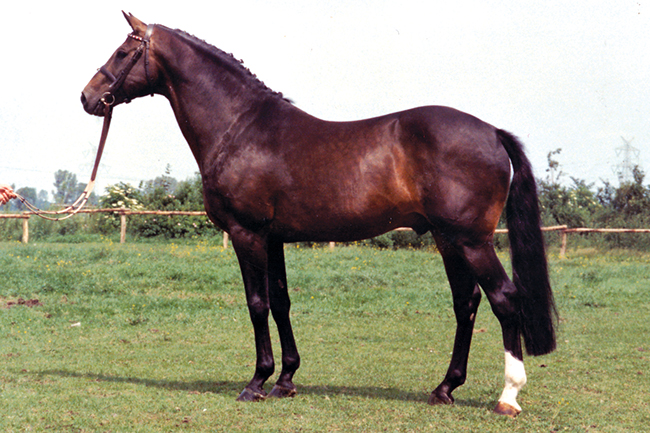
Cor de la Bryère ‘geld him’
Take the example of Cor de la Bryère, one of the big four foundation sires of modern jumping breeding. In 1970, the selection committee of the Haras du Pin visited his owner, Xavier Ribard, and suggested ‘that is not breeding stock, he’s too much of a sport horse. Better geld him; he’ll make a useful gelding.’ Luckily for ‘Corde’ and showjumping, the Holstein Verband were looking for new blood, and the French stallion became a star in northern Germany… although perhaps, in the French context, the selection committee was right.
Corradina carrying on the Cor de la Bryére line but if ‘Corde’ had stayed in France…
According to French breeder and journalist, Bernard le Courtois, Cor de la Bryère, needed the strength of the Holstein mare band to succeed: “When we tried to breed Cor de la Bryère with the French mares, we had rabbits. Cor de la Bryère needed a very strong mare, and we didn’t have this kind of mare in France.”
Landadel produced World Cup Showjumpers and Dressage horses – like Franke Sloothaak’s Legurio, even if he ‘failed’ at the Licensing
But the authorities in Holstein could get it wrong too. Landadel is arguably the best son of Landgraf, yet when his breeder Ilse Hell, wife of the legendary Holstein breeder and administrator, Maas J. Hell presented the colt at the licensing, he was dismissed.
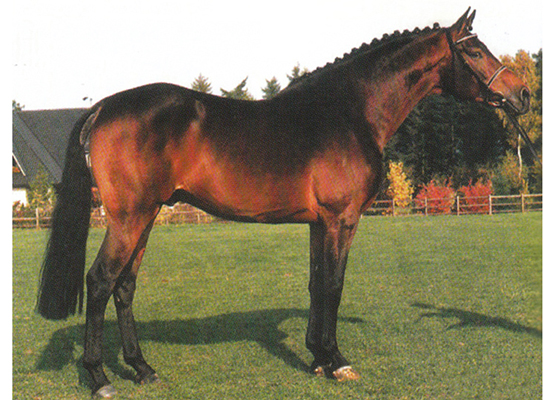
Landadel – too light
According to stud manager, Thomas Mohr: “Landadel was not accepted for the stallion licensing at Neumünster by the Holsteiner Commission, they said he was too light – a good sport horse not a stallion! So then he was leased to Böckmanns, and they bred with him for about ten years before he died, and every year he was in the top three for jumping sires, but he also bred dressage horses.”
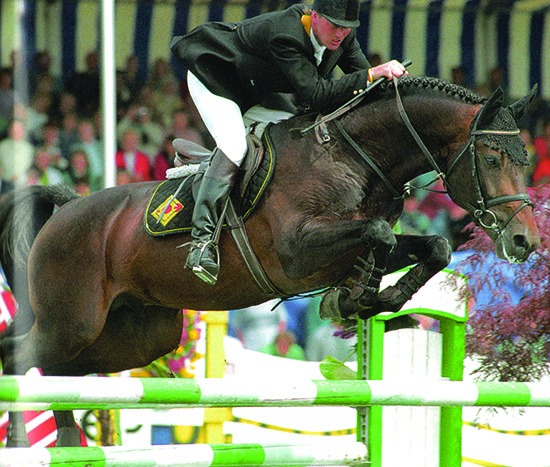
Libero – didn’t pass the performance test
Another great son of Landgraf, Libero, failed at the next stage – the performance test. Ironic, since he was one of the early stallion stars of the showjumping ring as the fashion swung in the direction of stallions who were also performers in their own right.
No Mercy – a winner at the top for Libero
story continues below the advertisement
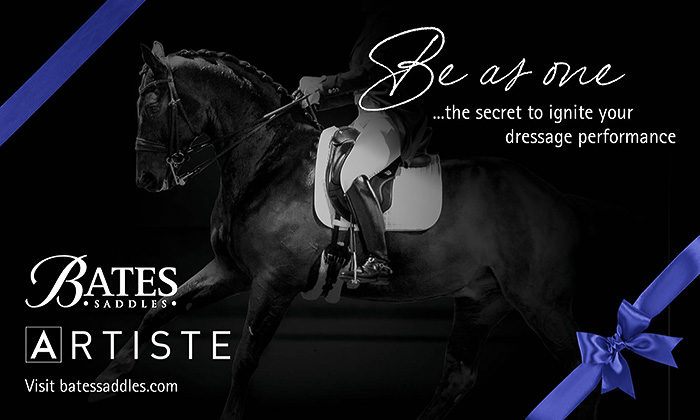
The Klatte family’s Grannus was almost a ‘performance test casualty’. The black son of Graphit scored a miserable 86.46 to come 58th out of a class of 66 at Adelheidsdorf back in 1976. Luckily for the showjumping world, his owner Heinrich Klatte had faith in the stallion and his two sons, Guido and Ulrich Klatte took Grannus out into the competition arena where he collected a series of wins up to Advanced level. Grannus only covered a few mares at the beginning of his career but was extremely popular towards the end of his life and was bred to as many as 300 mares a year and although he failed to produce a top stallion son to carry on his line, he was an outstanding sire of performers.
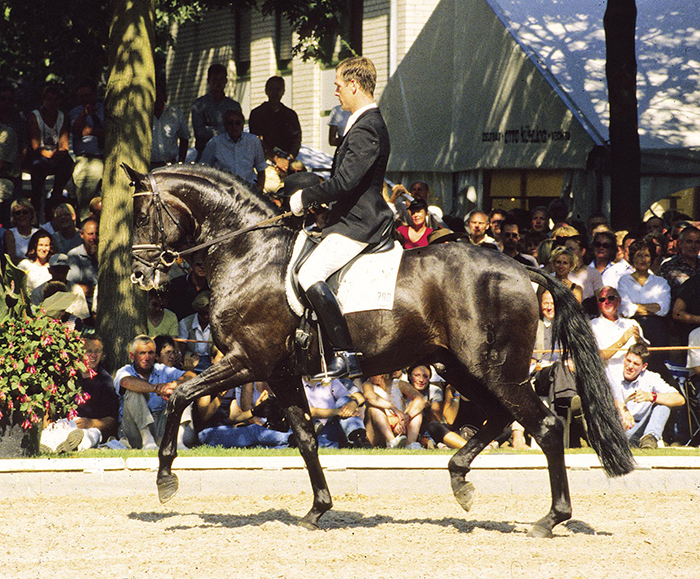
Ulf and Sandro Hit star at the Bundeschampionate
One of the first super stars of dressage stallions, Sandro Hit, was another almost brought undone by the performance test. The handsome black stallion scored under 100 points for his 100 day test, but luckily for him, when paired with Ulf Möller the combination clicked, winning titles at both the Bundeschampionship and the World Young Dressage Horse Championships. Ulf suggests that Sandro Hit’s poor score may be due to problems inherent in the performance test:
“Maybe that has something to do with the test. Now they don’t have to do that 100 day test and I think that is very good decision. Some stallions are too weak to do a 100 day test, and to do all those things like cross country jumping. Now we have a 30 day test and then it goes on their competition record, that is much better for the future.”
Still it was something of a family tradition, Sandro Hit’s grand-sire, Sandro failed to win approval at the Holstein licensing. He was purchased by Bent Neergaard, a respected Danish breeder. Sandro did a good 100 day test in Denmark and competed successfully in eventing and showjumping before being sold back to Germany, and Paul Schockemöhle, where he became one of the more important stallions of all time for both jumping and dressage…
One of Sandro Hit’s many winning sons, Sarkozy with Eva Möller
Story continues below the advertisement
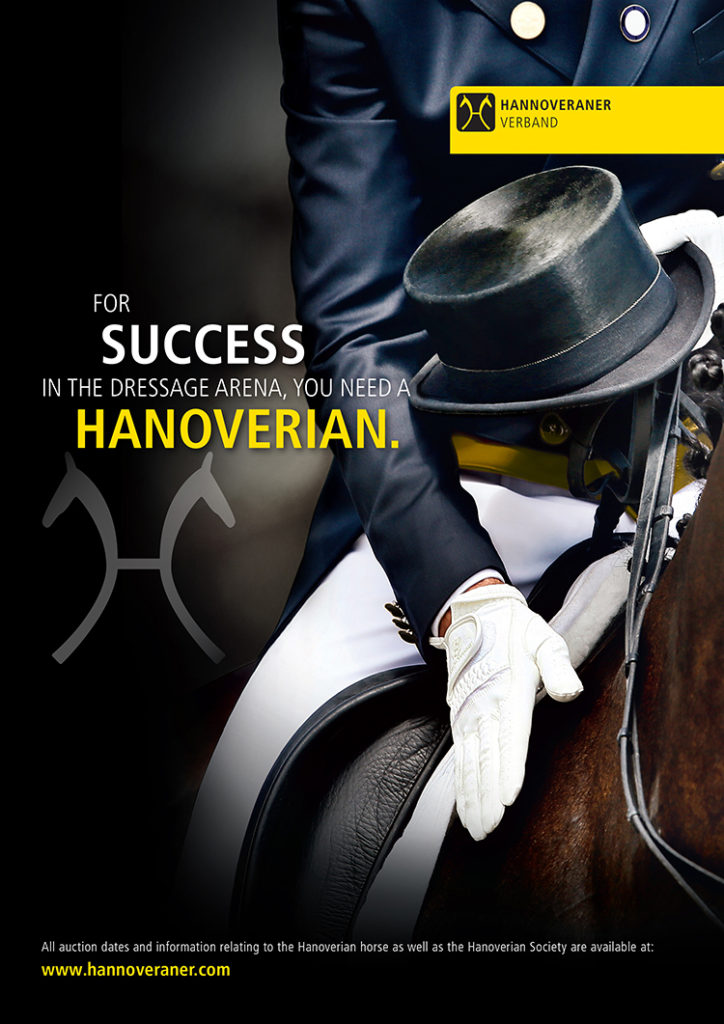
The very successful Dutch sire, Andiamo found an interesting way of being excluded from the KWPN ranks, not once but twice! The son of Animo was injured during his KWPN performance test, and spent two years recovering. He then re-entered the KWPN stallion selection process and although not initially selected, a re-inspection committee allowed him to go on to the three week performance test and finally as a seven year old he was KWPN approved in 2000… but not for long.
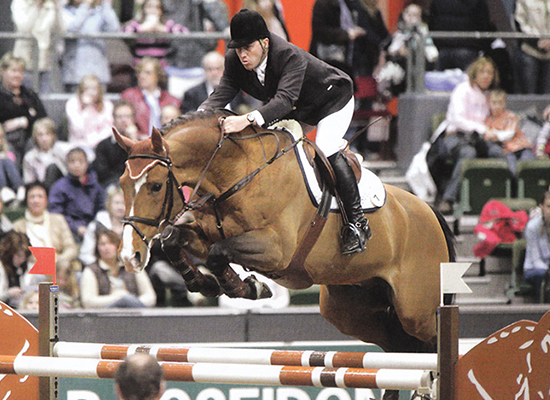
Andiamo – rejected twice!
Van Olst sold the stallion to Leon Melchior (hence the ‘z’ that is sometimes tacked onto his name) and because Melchior failed to present a collection of foals to the KWPN, he lost his approved status. It was a decade later, in 2010 before he was welcomed back into the KWPN ranks.
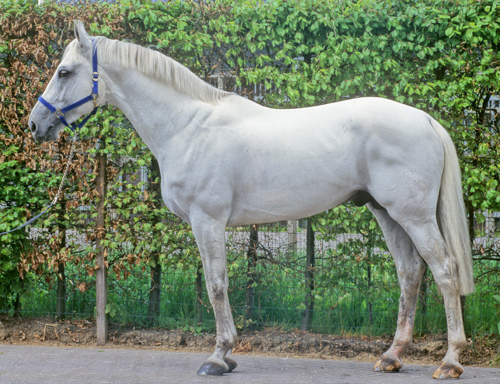
Mr Blue
Andiamo is in good company, other great Dutch stallions that were initially rejected, or failed, include: Mr Blue who was initially rejected then accepted after he started winning international Grand Prix, Heartbreaker, who was registered with the KWPN as a foal, but not presented for licensing until he was eight and Cardento who was failed at the licensing, and had to serve time in Sweden and prove himself in the sport with Peter Eriksson before returning to Holland to acclaim, and full books of mares.
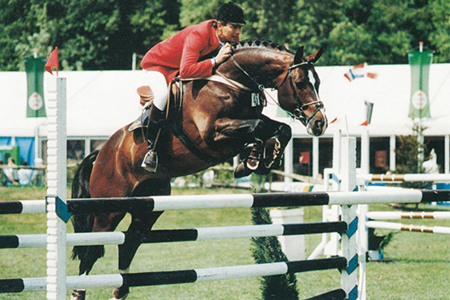
Voltaire – rejected in Oldenburg, only just accepted in Holland
Still the KWPN committee got it seriously right in the case of Voltaire. Admittedly he was a bit small (just 162 cms) and had a problem with one hoof when he was rejected by the Oldenburg licensing commission, but that didn’t deter Jan Greve, a Dutch veterinarian with a passion for breeding jumping horses and his business partner, Henk Nijhof. They heard that the young stallion was for sale, liked his technique and took him home to The Netherlands.
The KWPN licensing commission was not much more enthusiastic than their Oldenburg counterparts, Voltaire was graded 14th out of the fourteen horses to complete the performance test. He received excellent marks for jumping (and stable manners!) but just made it to stallion status.
story continues below the advertisement
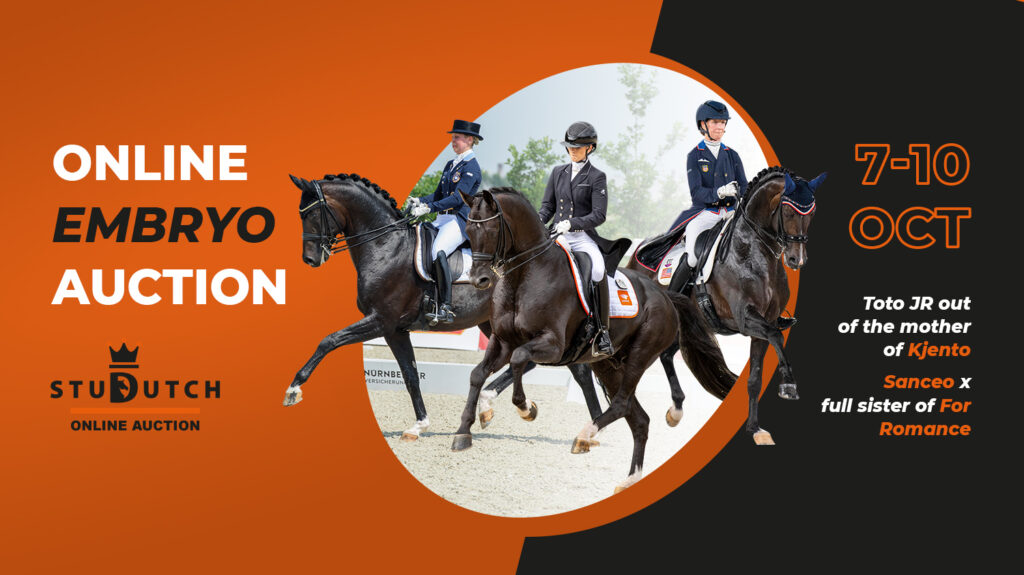
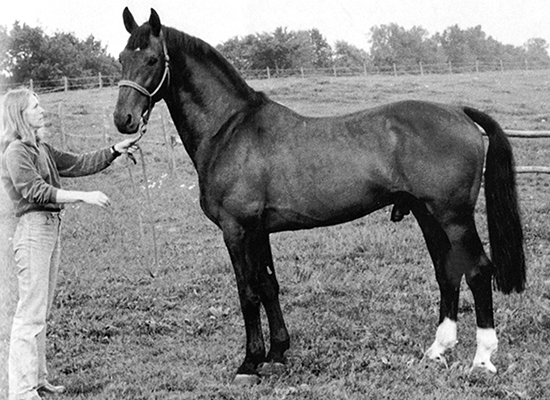
Irco Marco – not even a sport horse!
Even the methodical and highly organized Swedes, have had their lapses… when Irco Marco, one of their most influential jumping stallions, was first presented for licensing in 1976, the Swedish Commission, headed by Olle Kjellander, the National Studmaster at Flyinge, said they would never license the horse – according to the commission, he wasn’t even a sport horse.
Irco Marco – not even a sport horse – but he produced performers like Malin Baryard’s Irco Sun
The young stallion was presented again in 1978, and he was yet again refused even though he had been starring in competition, first with Ann Gustavii (who with her husband Lars, had purchased the horse as a four year old in 1975 from Fergus Graham who had in turn purchased him from his Dutch breeder, Hans Bijen) then with Swiss international, Paul Weier who took him into 1.60 classes. In the light of these performances, the stallion was granted a ‘provisional cover license’, which meant he could produce foals but they could not be registered!
Finally in 1982, Irco Marco was admitted to the B-group of Swedish stallions – and the foals born in the previous six years were retrospectively registered, including one of his most famous offspring, the mare, Marcoville.
The French officials didn’t just miss with Cor de la Bryère, the mighty Galoubet also suffered at the hands of their stallion commission. Although good-looking, Galoubet was still obviously out of a trotter mare, and was rejected as a three year old at the stallion selection. And if that is not enough, the hugely successful, Quidam de Revel was another who had to prove himself in the competition arena before he was accepted into the ranks of the breeding stallions.
Galoubet’s most famous stallion son, Baloubet, with Rodrigo Pessoa
Several commentators have noted that jumping horses don’t always show the best conformation – indeed the Hanoverian expert, Ludwig Christmann has established a negative correlation between high conformation scores and later jumping performances – so perhaps the Commissioners of the various studbooks have some excuse when it comes to the jumping stallions, but it happens with dressage horses too.
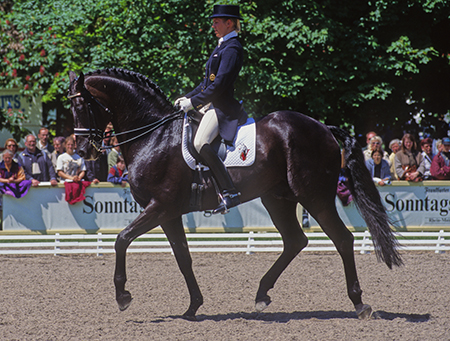
Rubinstein was rejected in Westfalia, only to be given a second chance in Oldenburg.
Welt Hit VI winning at the Bundeschampionate with Ulf Möller
Welt Hit IO, was the first product of the mating between Weltmeyer and the Hill Hawk xx mare, Cileste to be discovered by Ulli and Bianca Kasselmann (of PSI fame) and according to Ulli, like all of the family, the youngster looked pretty under-done when he bought them. So much so that the Oldenburg licensing commission refused Welt Hit at his initial stallion licensing. Later the commission was meeting in regard to another matter at the Kasselmann property, and they were asked look once again at Welt Hit. Still they refused, until a determined Bianca Kasselmann brought him through the front door and into the reception area and stood him up in for an astonished licensing commission in front of the fire place. They agreed to reconsider their original verdict and the first of the brothers (from 1 to 6) was approved.
Although my patriotic Dutch friends insist there is nothing unusual in the fact that the dressage megastar, Totilas, was not initially presented for colt selection, but was later granted stallion status on the basis of his outstanding performances, this cynical hack has generally found that if colt owners think their pony will pass, it goes up for selection, and that the best reason for keeping one home, is fear of failure. I guess we’ll never know the answer to that one, although I guess we can be fairly certain that Totilas will be a success as a sire – if only because of the quality of the mares put to him…
It is a remarkable coincidence that over the border in Germany, Breitling also elected to by-pass the licensing/performance test route, and similarly gained stallion status on the basis of his competition record. It should be pointed out that Breitling has a unique advantage in that most of his progeny flow seamlessly from the foaling paddocks to the training hall at the equestrian centre of his owners, Wolfram and Brigitte Wittig – thus giving them every opportunity to shine in the dressage ring.
Breitling – won his stallion status in the competition ring and went on to be
Germany’s No 1 dressage stallion on the FN rankings
These days, any young stallion’s licensing result has become increasingly critical to breeding success. Back in the days before transportable chilled semen, and when most of the breeders were traditional farmers, stallions that just scraped through at the licensing or barely passed the performance test, had a second chance when dispatched to the local breeding station. Dr Bade when he was the director of the State Stud Celle made this point to me:
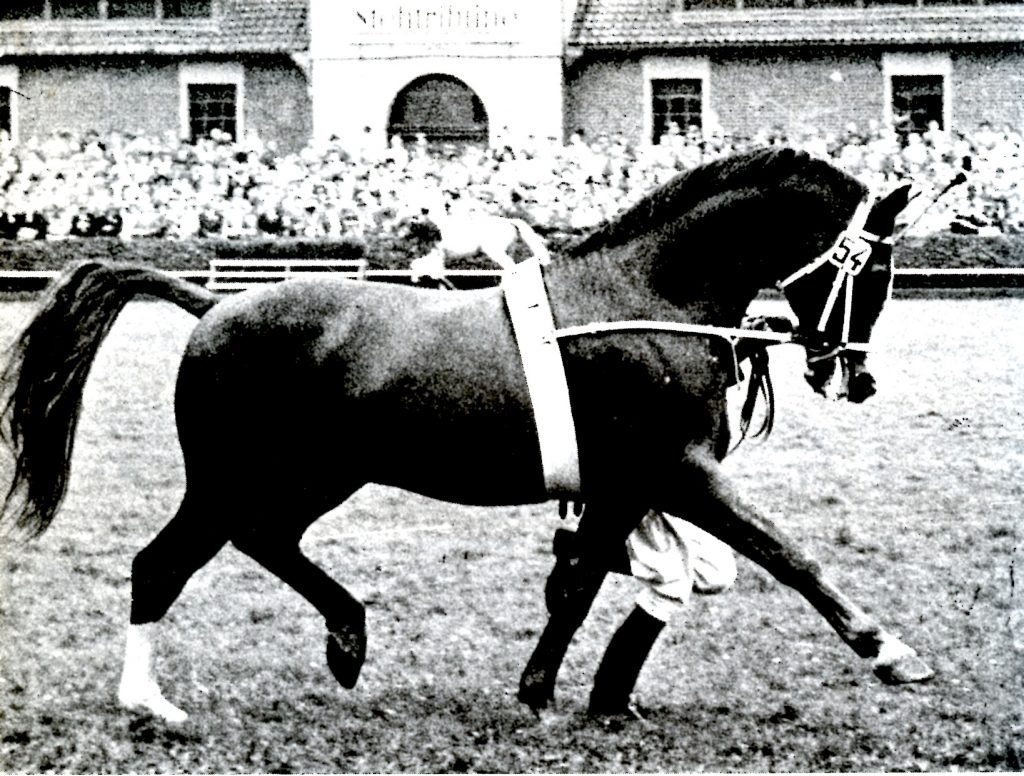
Duellant
“Take the example of Duellant, in his time nobody would take him. He went to the station at Landesbrück, as the second stallion, no-one remembers the first stallion any more. After two or three years, Duellant was a champion, but I think that would be impossible now.”
Cardento had to go and star in Sweden before he was accepted in Holland
And just to prove that success at the licensing is no guarantee of breeding excellence, consider the following names: Elektron, Derwisch, Erbherzog, Gluecksstern, Grossmogul, Maurice, Gluecksgriff, Buenos Aires, Fontainebleau, Golden Champ, William’s Gold, Nobleman, Go on Top and Lauda. Recognize any of them? Well they were all licensing winners in Hanover from 1980 to 2007! I can tell you one place you won’t find their names and that’s on the three stallion ‘toplists’ – dressage, showjumping and type – in the 2010 Hannoveraner Jahrbuch Hengste. While the ranks of the licensing champions include solid gold sires like Weltmeyer, Brentano, Wolkentanz, Londonderry and Don Frederico, it would seem that 14 out of 27 licensing winners disappeared without trace…
Over the border in Oldenburg, if we look at their last 20 licensing winners, there are some good sires there – including Rohdiamant who was once ranked 4th on the WBFSH stallion rankings – the unavoidable truth is that not one of those 20 licensing champions features in the 2009 German FN’s top 1% of sires lists for either dressage or showjumping.
It is not a situation that shows any signs of disappearing, at the 2010 KWPN stallion show the champion stallion of the licensing was Cover Story, but after a series of fairly dismal performances under saddle in the performance test, he was withdrawn.
As long as there are stallion licensings, it would seem there are going to be red-faced commissioners, and commentators who are oh-so-wise after the event.
I guess that is half the fun of it all.
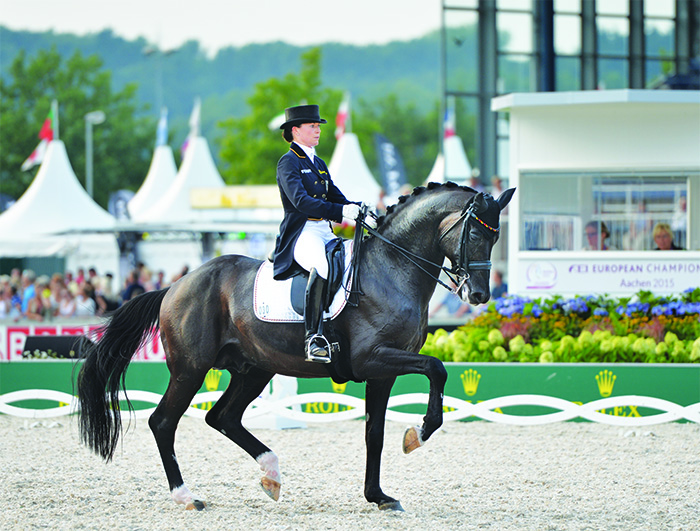
Desperados FRH is another stallion snubbed by the Licensing Commission – before he went on to be a world class competitor, and is now proving a world class sire. Sadly he died earlier this year…
This story first appeared in 2010 in The Horse Magazine
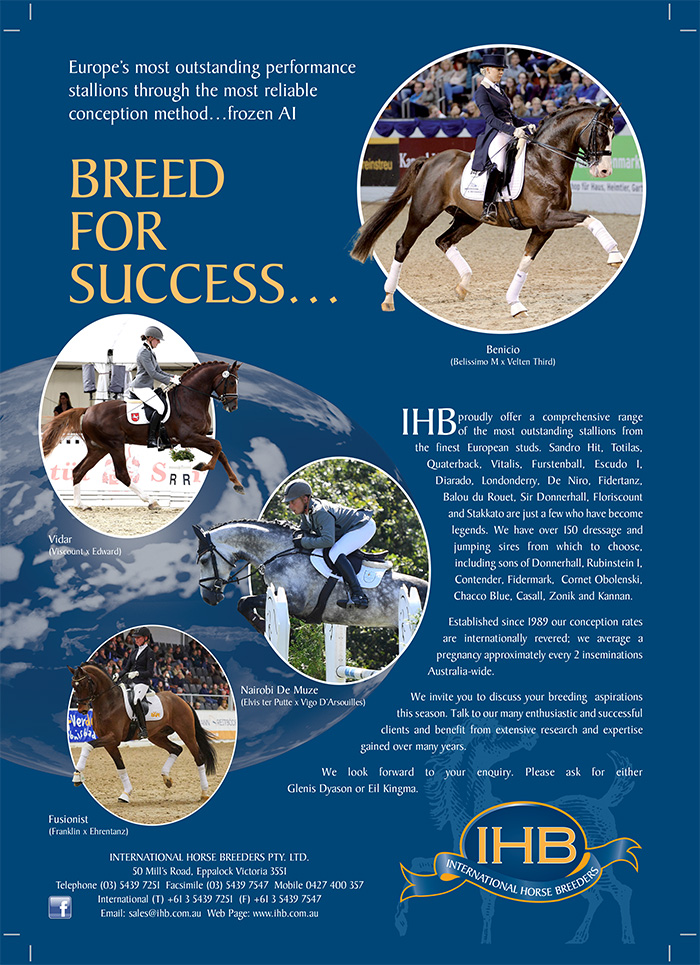




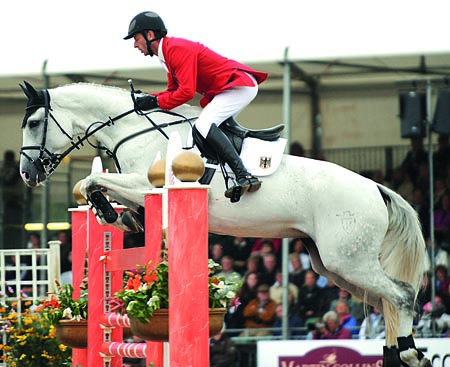
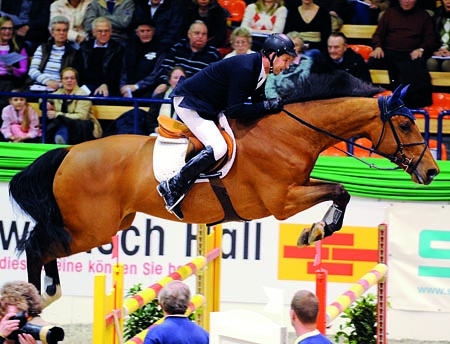
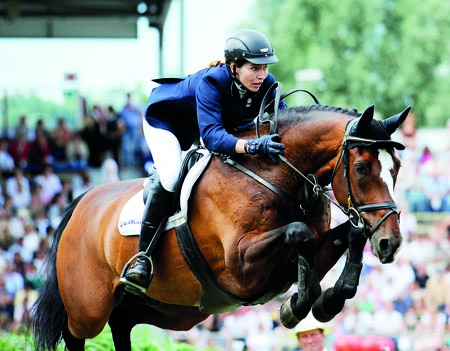
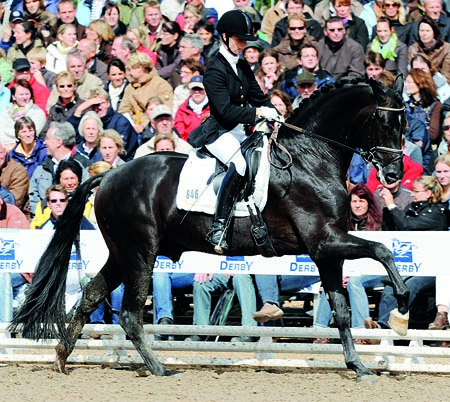
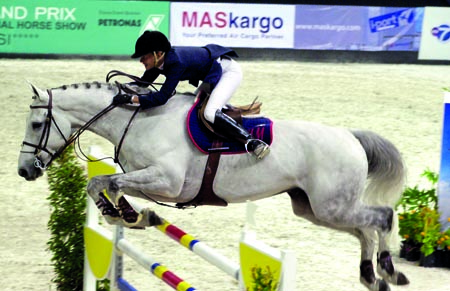
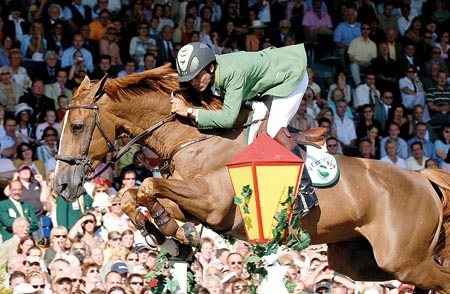
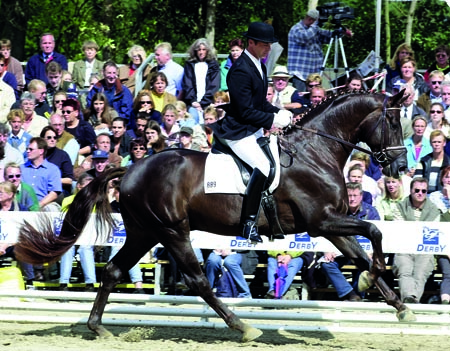
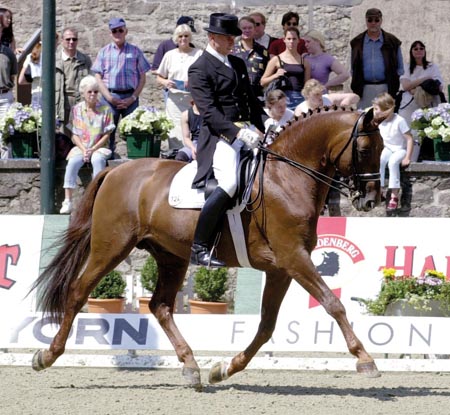
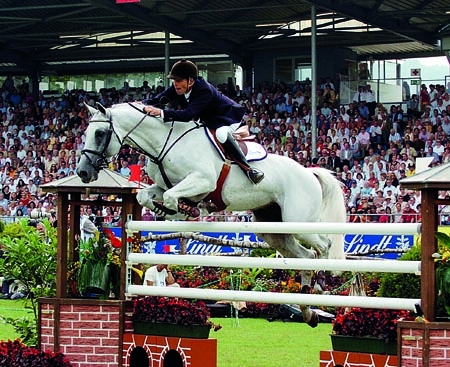
One must agree with this article, because if the commissioners have a a crystal bowl to read in the future then they would not be commissioners but billionaires!!!
Interesting article, but don’t forget that Golden Champ, William’s Gold and Lauda didn’t have any or just a small chance in production since they died very early!
Love the article. Interesting as a number of the above are now represented in the Irish out cross breeding, we have some in our breeding g programme. See Annsfort Sport Horses Facebook page.
Davvero molto interessante😊👍🏻!
Grazie!!!